Settling basins the only practical means of treating effluents from shrimp farms
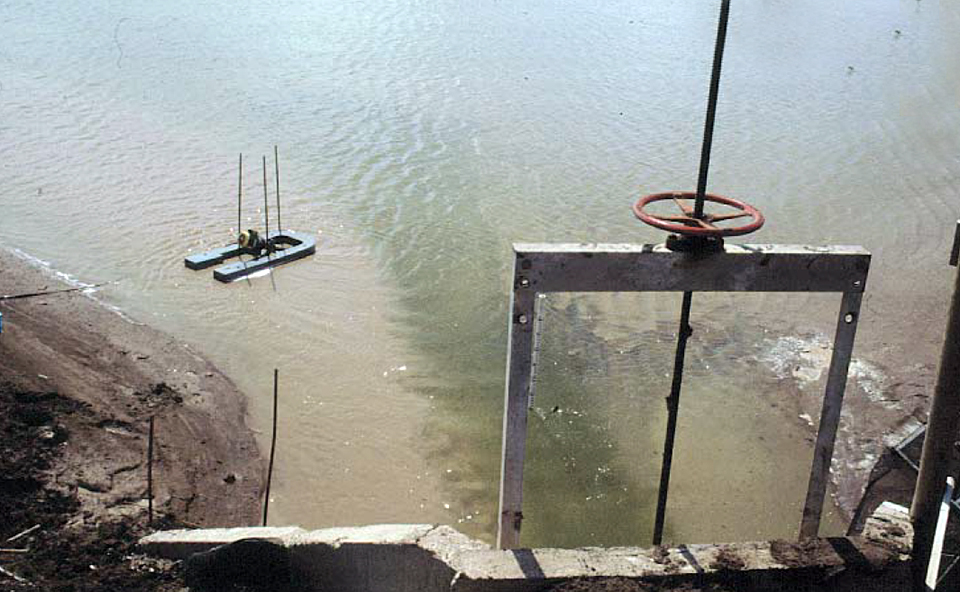
Although current water exchange rates tend to be lower than in the past, most shrimp farms still exchange some water during pond draining and shrimp harvest. This water exchange typically results in the greatest volume of effluents from these facilities. Consider that when a 1-meter-deep pond is drained for harvest, 10,000 cubic meters of effluent are released per pond hectare. For comparison, Table 1 shows the amount of effluent associated with different average water exchange rates during a 120-day grow-out period. At a relatively low water exchange rate of 2 percent, the water volume released is still 2.4 times the volume of the draining effluent, and the difference is 18 times at 15 percent daily exchange.
Boyd, Amount of effluent from different water exchange rates, Table 1
| Average Daily Water Exchange (% Pond Volume) | Exchange Effluent Volume (m3/ha per Crop) |
|---|---|
| 2 | 24,000 |
| 5 | 60,000 |
| 10 | 120,000 |
| 15 | 180,000 |
Pond water exchange and effluent composition
Although there has been considerable discussion about not exchanging water to minimize the discharge of nutrients and organic matter into natural water bodies, often little thought is given to the water discharged at harvest. Assume that a shrimp farmer lowers water exchange to 2 percent per day as a practice to minimize possible environment effects. The average concentrations of five-day biochemical oxygen demand (BOD5) and total dissolved solids (TSS) – two important water quality variables in pollution control efforts – are about 5 milligrams per liter and 100 milligrams per liter, respectively, in waters of semiintensive ponds. Thus, about 120 kg BOD5 per hectare and 2,400 kg TSS per hectare would be discharged from ponds through water exchange during the typical crop period. Near harvest, BOD5 and TSS concentrations will have increased to about 10 milligrams per liter and 150 milligrams per liter, respectively.
Effluent composition during pond harvest
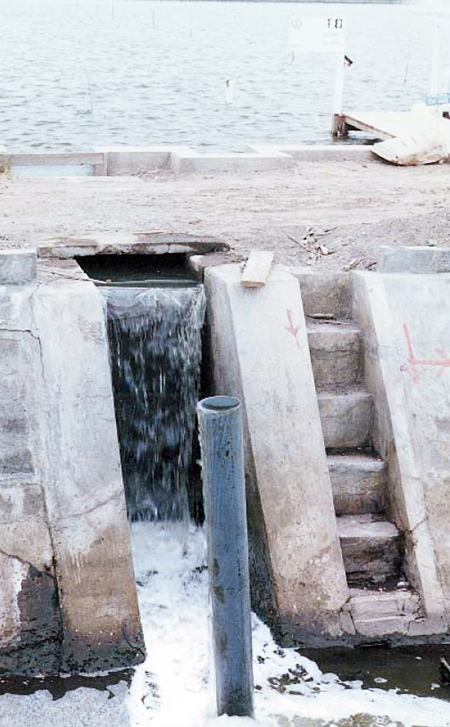
When ponds are drained, effluent will be almost identical in composition to pond water until about 80 percent of pond volume has been released. During final draining to empty the ponds, concentrations of BOD5, TSS and other substances will increase because of sediment resuspension caused by crowding of agitated shrimp, shallow and rapidly flowing water, and harvest activities.
The average BOD5 and TSS concentrations often are about 50milligrams per liter and 1,000 milligrams per liter, respectively, in the final 20 percent of effluent volume. Thus, the load of BOD5 is about 180 kilograms per hectare and the load of TSS is around 3,200 kilograms per hectare in the final effluent released to empty the pond. The draining effluent contributes more to potential pollution than does water exchange at 2 percent per day.
Table 2 describes the situation described above. The last 20 percent of draining effluent contributes about 33 percent of BOD5 and 35 percent of TSS released during the entire crop. The final effluent also is many times more concentrated than the water exchange effluent and the initial draining effluent (first 80 percent).
| Type of Effluent | Concentration (mg/L) BOD5 | Concentration (mg/L) TSS | Load (kg/ha) BOD5 | Load (kg/ha) TSS |
|---|---|---|---|---|
| Water Exchange | 5 | 100 | 120 | 2,400 |
| Draining (First 80%) | 10 | 150 | 80 | 1,200 |
| Final Draining | 50 | 1,000 | 100 | 2,000 |
| Total | – | – | 300 | 5,600 |
Settling basins
Settling basins offer an excellent method for treating effluent released during shrimp harvest, and especially the final, highly concentrated effluent. These basins remove coarse solids (and the considerable BOD5 associated with them) suspended in water during the final phase of pond draining. Studies have shown that 60 to 80 percent of TSS and 15 to 30 percent of BOD5 can be removed in a settling basin with only six to eight hours of water detention time.
In addition to settling coarse solids from final effluent, settling basins can also remove solids from effluent released during water exchange and in the initial phase of pond draining. This is important because a literature review of shrimp farm effluent done recently for GAA reveals that total suspended solids are consistently above 100 milligrams per liter at many farms. Most water quality permits only allow 50 milligrams per liter total suspended solids, so without sedimentation basins, shrimp farm effluents can be expected to exceed the widely used effluent permit limit of 50 milligrams per liter.
Basin design and area
Settling basins are simply ponds that detain water long enough for coarse suspended solids to settle to the bottom. These basins should be 1 to 2 meters deep, with water introduced at the surface on one side and discharged from the surface on the other side. The size of the basin depends upon the inflow rate and the detention time necessary for removing coarse solids.
Basins gradually fill in as they accumulate sediment, and detention time for water declines. Thus, settling basins should be constructed 1.5 to 2 times larger than necessary. Even with reserve capacity, settling basins will lose volume as sediment accumulates, and they must be cleared out occasionally to maintain adequate performance. Dual settling basins should be constructed so that one can be in use while the other is being cleaned.
Conclusion
Shrimp farmers may think settling basins require too much space. However, this opinion is not necessarily true. Consider a 500-hectare shrimp farm with 1-meter-deep ponds operated with an average daily water exchange of 2 percent. The daily water exchange volume would be 100,000 cubic meters, and on a day when 20 ha of ponds are completely drained, the effluent volume would increase to only 300,000 cubic meters per day. To provide a detention time of eight hours, a 100,000-cubic-meter settling basin would be necessary. This would require a 1-meter deep settling basin of 10 ha or a 1.5-meter-deep settling basin of 6.67 ha. These areas would be only 2 percent and 1.3 percent of the farm area.
Even if settling basins are constructed in duplicate and with reserve capacity, they still would not require more than 4 to 6 percent of the area of a large farm. Of course, on a small farm, the proportion of farm area devoted to settling would have to be much larger – often 10 to 20 percent of farm area. Nevertheless, settling basins seem to be the only practical means of treating effluents from small or large shrimp farms.
(Editor’s Note: This article was originally published in the August 2000 print edition of the Global Aquaculture Advocate.)
Now that you've reached the end of the article ...
… please consider supporting GSA’s mission to advance responsible seafood practices through education, advocacy and third-party assurances. The Advocate aims to document the evolution of responsible seafood practices and share the expansive knowledge of our vast network of contributors.
By becoming a Global Seafood Alliance member, you’re ensuring that all of the pre-competitive work we do through member benefits, resources and events can continue. Individual membership costs just $50 a year.
Not a GSA member? Join us.
Author
-

Claude E. Boyd, Ph.D.
Professor, Department of Fisheries and Allied Aquacultures
International Center for Aquaculture and Aquatic Environments
Auburn University, Alabama
36849-5419 USA[117,100,101,46,110,114,117,98,117,97,64,49,101,99,100,121,111,98]
Tagged With
Related Posts
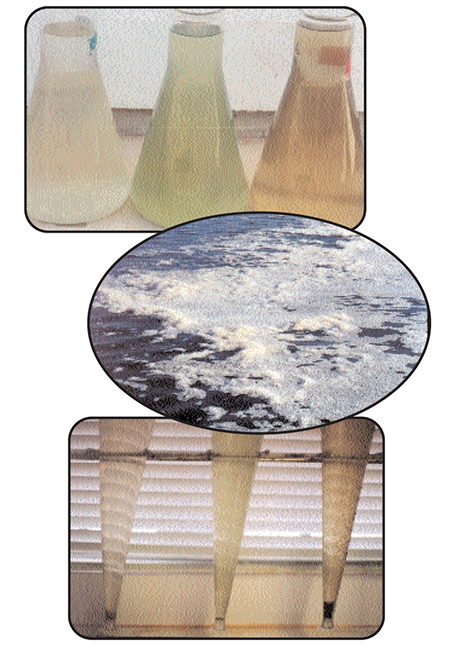
Intelligence
Changing paradigms in shrimp farming, part 1
Conventional wisdom for farming white shrimp involves semi-intensive culture in large ponds, routine water exchange and reliance on wild broodstock.
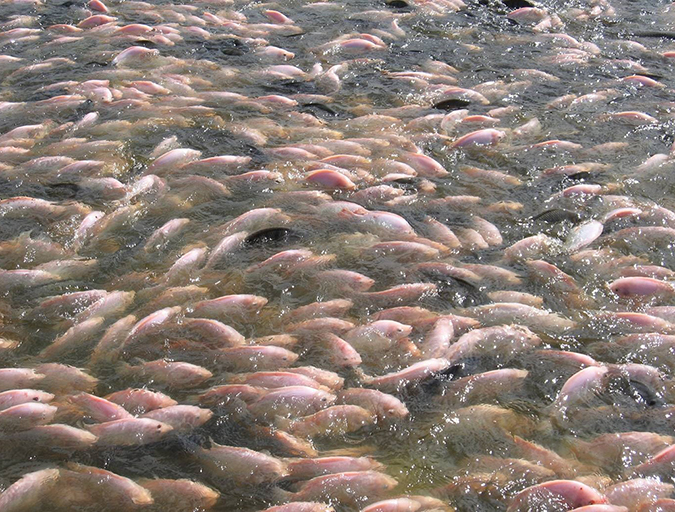
Health & Welfare
Common salt a useful tool in aquaculture, part 1
The preventive use of common salt (sodium chloride) by commercial producers of freshwater fishes has many benefits, including helping with the routine prevention of losses due to diseases, stress and mishandling during transport, harvesting, grading, counting, weighing and induced spawning.

Responsibility
Land and water use issues in aquaculture
It behooves us to understand land and water use issues and understand the differences between aquaculture and traditional agriculture.
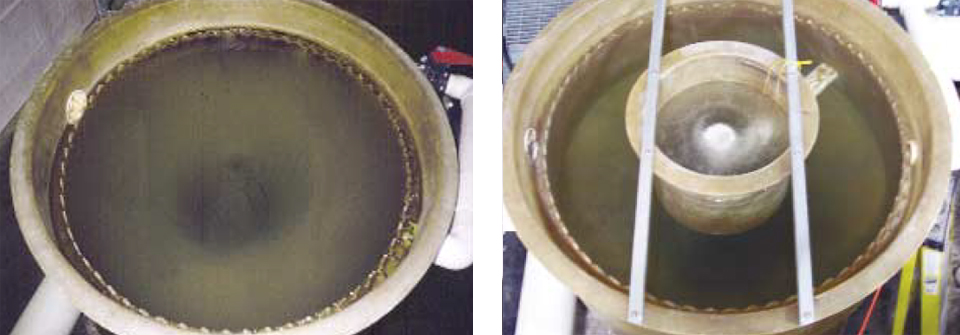
Responsibility
Settler evaluation: Radial flow vs tangential flow
In a study, a radial-flow settler provided approximately twice the TSS removal efficiency of a comparable swirl separator.

